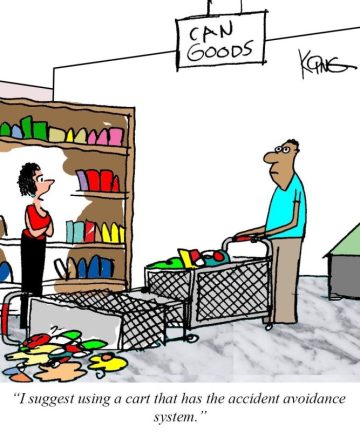Paws & Claws
The Dark Side of Puppy Adoption: Why Steering Clear of Puppy Mills is Crucial
Putting Ethics Over Aesthetics: What Vets Want You to Know Before You Adopt a Puppy.
Everyone loves the idea of bringing home a cuddly, wriggly puppy. The prospect of little paws and wagging tails is undeniably enticing. However, where you get your new furry friend from can make a significant difference, not just in your life but in the welfare of animals. Veterinarians and animal welfare organizations strongly discourage adopting from puppy mills and for good reasons.
First things first, let’s define what a puppy mill is. Unlike responsible breeders who prioritize the health and well-being of their animals, puppy mills are breeding operations where profit eclipses all else, often at the expense of the animal’s health and safety. At the core of a puppy mill’s business model is mass production, leading to cutting corners in ways that are almost universally harmful to the animals.
Puppy mills are easily identifiable by a series of red flags:
- Inadequate Conditions: Unclean cages, poor ventilation, and insufficient light are the norms.
- Subpar Care: Food is often low-grade, and pups receive little to no playtime or socialization, affecting their mental well-being.
- Falsified Credentials: It’s not uncommon for puppy mills to forge registration and pedigree certificates, misleading the adopter.
- Poor Breeding Practices: With profit as the prime motive, there’s little concern for avoiding genetic defects or hereditary disorders.
Adopting a dog from a puppy mill doesn’t just impact you; it perpetuates a vicious cycle. By purchasing from them, you’re providing revenue that keeps these unethical businesses in operation. Furthermore, you run the risk of bringing home a pet with severe health issues or behavioral problems. Many such dogs end up being abandoned or surrendered to shelters, exacerbating the homeless pet crisis.
Thankfully, there are better avenues for adoption. Certified breeders who undergo regular inspections and adhere to humane practices are an option. However, adopting from an animal shelter or rescue organization is often the most ethical choice. Not only do you offer a home to an animal in need, but you also make room for another dog to be rescued.
Puppy mills sell through various channels, from online classifieds to flea markets and even some pet stores. A little due diligence can go a long way in ensuring you’re not supporting these unscrupulous operations.
As inviting as the idea of a new puppy is, it’s crucial to approach adoption responsibly. A pet isn’t just an accessory but a life that will be part of your family for years to come. By avoiding puppy mills, you’re not just saving one animal; you’re contributing to a movement that insists on humane treatment for all.
Mature Living
Seniors: Unsung Heroes in Animal Shelters
Senior Volunteers Bring Joy and Care to Shelter Animals.
In a heartwarming turn of events, senior citizens are stepping up as invaluable volunteers at animal shelters, proving that age is just a number when it comes to compassion for our furry friends. Animal shelters across the nation are witnessing an inspiring trend: seniors lending their time and love to animals in need.
For many seniors, the desire to care for animals doesn’t fade with age, but the ability to keep pets at home often becomes impractical. However, these passionate individuals have found an alternative way to keep their love for animals alive by volunteering at local shelters.
These senior volunteers are involved in various roles, from adoption counseling to directly interacting with the animals. Adoption counseling is a critical task where seniors use their wisdom and empathy to guide potential pet owners through the adoption process, ensuring the perfect match between pets and their new families.
But it’s not just about paperwork. Many seniors opt for a hands-on approach, engaging directly with the animals. Their activities include playing with kittens, walking dogs, and providing the much-needed companionship that these shelter animals crave. This interaction is not just beneficial for the animals; it also brings immense joy and a sense of purpose to the seniors.
Interestingly, extensive knowledge of animal care is not a prerequisite for volunteering. Most shelters offer training programs for their volunteers, ensuring they are well-equipped to handle their roles effectively. This openness makes volunteering in animal shelters an accessible option for many seniors.
The commitment required varies, with some shelters asking for around eight hours per week. This flexibility allows seniors to balance their personal life and volunteer work, fostering a sustainable relationship between them and the shelter.
Senior citizens are proving to be a boon for animal shelters, filling their spaces with experience, love, and care. Their involvement not only enhances the lives of shelter animals but also enriches their own, creating a beautiful synergy of mutual benefit and joy.
Paws & Claws
Holiday Cheer for Furry Friends: Pets Join the Festive Fun
Pampering Pets with Gifts and Costumes Becomes a Festive Trend.
The holiday season isn’t just for humans anymore; pets are increasingly becoming central figures in Christmas celebrations. A recent survey by Chewy highlights a growing trend: a staggering 94% of pet owners include their furry friends in holiday festivities, with many going the extra mile to ensure their pets enjoy the season just as much as they do.
Gift-Giving Galore for Pets
The bond between pets and their owners is stronger than ever during the holiday season. According to the survey, 58% of pet owners plan to buy two or three gifts for their pets. From cozy beds to chew toys and gourmet treats, pets are participating in holiday traditions and on the receiving end of generous holiday spoils.
Dressing Up: A Trend with Caution
Another trend gaining traction is dressing up pets for the holidays. While 78% of dog owners enjoy this festive activity, it’s crucial to consider the comfort and safety of the pets. Costumes can cause skin irritation and stress, especially for dogs, signaling the need for mindful choices when it comes to pet fashion.
Cats and Christmas Trees: A Delightful Duo
Cats, known for their curiosity, find a special kind of joy in Christmas trees. The combination of a tree indoors, dangling ornaments, and shiny decorations is irresistible to feline friends. However, pet owners must be cautious as these enticing decorations pose risks. Similarly, pet birds find Christmas trees to be a source of fascination, requiring vigilant supervision.
Dogs and Holiday Hazards
Dogs, with their playful and curious nature, are notorious for unwrapping presents – sometimes even those that aren’t theirs. The holiday season also brings potential hazards like biting wires, which can be dangerous. Dog owners are advised to be particularly mindful of their pets’ surroundings during the festivities.
As pets increasingly become part of family holiday traditions, it’s important for pet owners to balance festive fun with safety. Whether it’s thoughtful gift-giving, careful costume selection, or ensuring the household decorations are pet-friendly, the aim is to make the holiday season enjoyable for every member of the family, including our beloved pets.
Paws & Claws
Unveiling the Spiky Enigma: A Comprehensive Guide to Caring for Pet Hedgehogs
Beyond the Adorable Videos: What It Really Takes to Keep a Hedgehog Happy and Healthy.
So, you’ve seen those endearing videos of hedgehogs curling into cute little balls or running on wheels, and you’re seriously considering adopting one. While it’s easy to fall for their undeniable charm, caring for a hedgehog is not as straightforward as it may seem. These little creatures, native to parts of Europe, Asia, and Africa, require meticulous care. Before you embark on this prickly journey, here’s everything you need to know.
The saying “a hedgehog needs room to roam” couldn’t be truer. Unlike some small pets that are content in smaller enclosures, hedgehogs need ample space to move, run, climb, and dig. Experts recommend a living area of at least eight square feet. A small cage just won’t cut it; it’s crucial to provide them with a living environment that allows them to carry out their natural behaviors.
In addition to ample space, hedgehogs need toys and accessories for mental and physical stimulation. Think running wheels, small huts, climbing rocks, and an assortment of tubes and balls. These aren’t just cute add-ons; they’re necessities for your hedgehog’s well-being.
Hedgehogs are insectivores, but that doesn’t mean their diet should solely consist of insects. Many pet stores offer specialized feed formulated for insectivores. If you opt for a DIY approach, a balanced diet can include cat food mixed with fruits, vegetables, and insects like crickets and worms. However, portion control is vital. Hedgehogs have a propensity to gain weight, and obesity can prevent them from curling into a ball—a natural defense mechanism—which can endanger their health. If this happens, consult a veterinarian immediately.
Despite their wild origins, hedgehogs are relatively clean animals. They require occasional baths and nail trims. One crucial but often overlooked aspect is the cleanliness of their living environment. Dirty cages or running wheels can lead to soiled paws, increasing the risk of bacterial infections.
If you’re conscious about your energy bills, bear in mind that hedgehogs thrive in temperatures between 75 and 84°F. They react poorly to cold conditions. If maintaining this temperature range throughout the year is a concern, you might want to reconsider hedgehog adoption.
Pet hedgehogs are adorable, but they’re not the right fit for everyone. With specialized dietary needs, significant space requirements, and a need for warmer temperatures, they demand a dedicated owner. If you’re willing to put in the work, your prickly friend will offer a unique and rewarding companionship.
Paws & Claws
The High Stakes of Pets and Pot: How to Safeguard Your Furry Friend from Cannabis Exposure
The Green Boom and Its Unintended Four-Legged Victims: What Pet Owners Need to Know.
As cannabis gains wider acceptance for medical and recreational use, it brings along new concerns—especially for pet owners. No matter how careful you are, the booming popularity of edibles and oils could spell danger for your furry friend. Here’s a guide on how to prevent cannabis poisoning in pets and what steps to take if exposure occurs.
In states where cannabis is legal, edibles have turned into a booming business. From brownies to jujubes, there’s an ever-expanding list of cannabis-infused treats. But what’s a sweet indulgence for humans can be a life-threatening hazard for dogs, who are naturally attracted to sugary foods. Not to mention, cannabis oils and capsules, though appearing innocuous, are just as harmful. Storing these items securely out of your pet’s reach is your first line of defense.
Beyond edibles, even the act of smoking cannabis can pose a threat. Though the effects of second-hand cannabis smoke on pets have not been as extensively researched as in humans, existing data suggest that it can lead to cannabis poisoning in animals. The best practice is to partake in smoking activities outside, far from your pet.
Pets won’t be able to tell you they’re feeling off, but there are noticeable symptoms that might indicate cannabis poisoning:
- Agitation or nervousness
- Abnormally cold body temperature
- An unsteady gait
- Altered heart rate
- Lethargy or drowsiness
- Inappropriate urination
- Dilated pupils
- Excessive drooling
- Vomiting
- Bloodshot eyes
Pets exposed to high-THC cannabis products are at greater risk and may require immediate emergency treatment.
If your pet shows signs of cannabis poisoning, immediate action is crucial. Contact an animal poison control center or your veterinary clinic as soon as possible. Many clinics now have expertise in treating cannabis exposure in pets, and some even have dedicated hotlines for such emergencies.
As the wave of cannabis legalization continues to roll across the country, pet owners need to be extra vigilant. While cannabis has therapeutic potential for humans, the consequences for our four-legged friends can be dire. Keep cannabis products securely stored, and be mindful of your usage habits to ensure the safety of your pets.
Paws & Claws
When Furry Friends Face Fire: A Guide to Dealing with Pet Burns
The How-To on Emergency Care for Burns in Pets: What You Need to Know.
It’s a pet parent’s worst nightmare. You turn your back for a second, only to discover that your four-legged friend has touched something hot and is now distressed. Accidents happen, and while we can’t anticipate every mishap, we can prepare ourselves for how to respond appropriately when our pets get burned.
The critical moments following a burn are when most people are likely to make misguided attempts to alleviate their pets’ pain. The first rule is to avoid using ointment, grease, or butter on the affected area. Contrary to old wives’ tales, these substances trap heat and can worsen the burn.
Instead, your immediate action should be to immerse the burned area in cold water. This will not only cool the affected area but also serve to dampen any emerging inflammation. Gently dry the burn area and wrap it in a clean or sterile dressing. This is where a well-stocked first-aid kit comes into play.
Even if the burn appears minor, it’s crucial to call your veterinary clinic. The vet will ask you a few questions to gauge the situation and will then guide you on the steps to take before your appointment. In severe cases, the vet may recommend coming in immediately.
If the burn is severe, use a clean, damp cloth to cover the affected area, opting for lukewarm water instead of cold. Handle your pet gently to avoid exacerbating the pain. Placing a muzzle on your pet may be necessary to prevent them from biting you or themselves in distress.
Once at the vet clinic, the healthcare team will conduct a thorough examination. Depending on the severity of the burn, the treatment plan may include painkillers, hygiene care, and nutrient-rich food to hasten recovery. Owners should heed the vet’s advice and make any necessary changes to their pets’ living conditions to prevent future accidents.
For those looking to arm themselves with more first-aid knowledge, the American Veterinary Medical Association (AVMA) provides invaluable resources on its website, avma.org.
It’s never easy to see your beloved pet in distress. Knowing what to do—and what not to do—can make a significant difference in your pet’s pain levels and overall recovery process. Pet burns are a critical reminder that while accidents happen, it’s our responsibility to equip ourselves with the correct information to provide the best care possible for our furry family members.
Paws & Claws
Deciphering Furry Wishes: The “Show Me” Technique
A Simple Phrase Unlocks the Desires of Our Four-Legged Companions.
Pet owners often face the conundrum: “What does my pet want?” The riddle of their insistent nudges, eager eyes, or unexpected antics can leave many puzzled. But now, Liz Palika, in her latest book, “The New Age Dog,” provides a straightforward method for tapping into our pets’ unspoken desires.
It’s not uncommon to find ourselves in situations where our pets appear to be attempting communication, whether it’s a dog pacing back and forth or a cat assertively occupying your newspaper. Rather than playing a prolonged guessing game, Palika suggests a more direct approach: simply asking them.
Dubbed the “Show me” technique, it requires the owner to verbally prompt the pet with the phrase “Show me” and then follow the animal’s lead. As you repeat the command and approach various items—perhaps a leash indicating a walk or a water dish signifying thirst—pay attention to your pet’s reactions. An animated response typically means you’ve struck gold.
While many associate training primarily with dogs, Palika’s method is not species-specific. Cat owners, too, can benefit from the “Show me” routine. So, the next time your feline friend disrupts your TV time or makes a spontaneous lap landing, instead of shooing them away, consider asking them to guide you to the solution. More often than not, once their need is met, you can resume your activity in harmony.
Pets, much like humans, have their unique ways of expressing needs and desires. While they might not speak our language, the “Show me” technique offers an avenue to bridge the communication gap, fostering a deeper understanding and bond between pets and their owners. The next time Fluffy or Spot seems particularly insistent, remember: a simple question might just unlock the answer.






































































